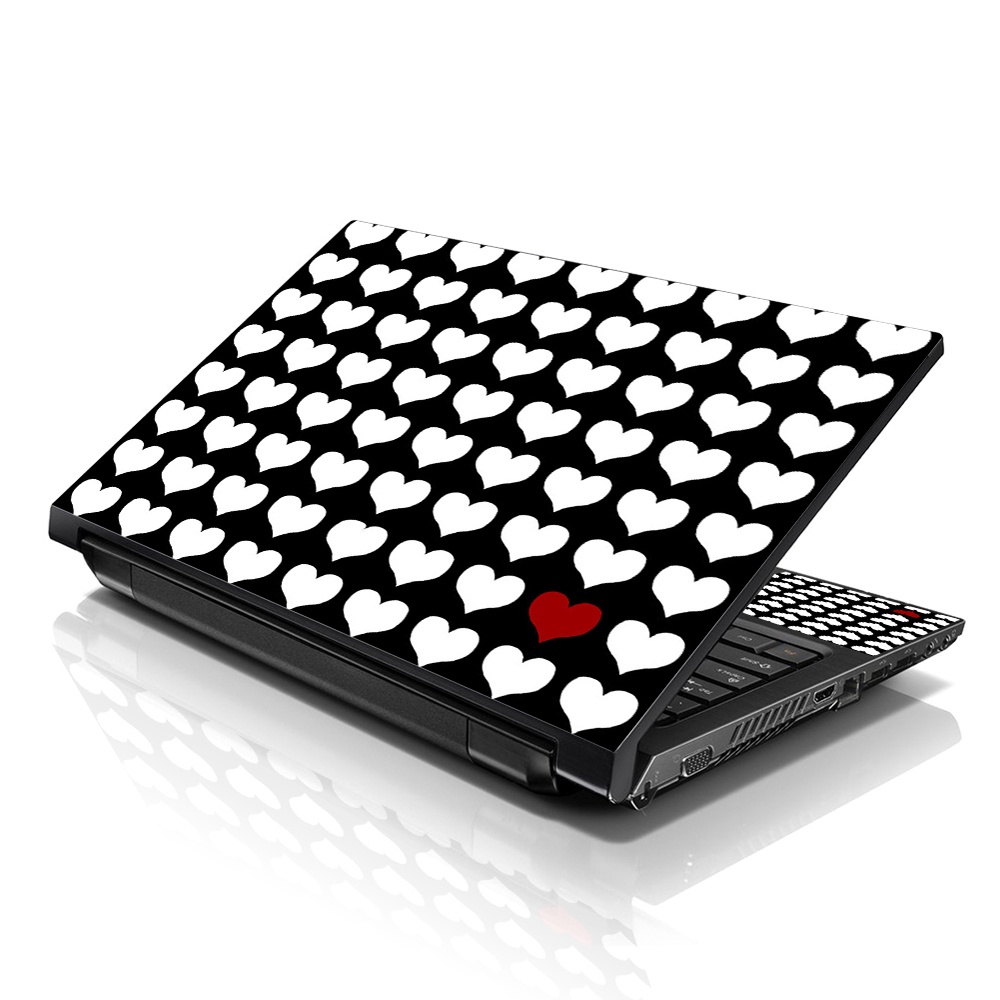Laptop skins are a popular way to personalize and protect your device from scratches and scuffs. However, when it's time to remove the skin, it can leave behind stubborn residue that seems impossible to get rid of. Many people worry about damaging their laptops in the process. Fear not! With the proper techniques and products, you can safely remove laptop skins residue without harming your device.
Understanding Laptop Skin Residue
Laptop skin residue is often caused by the adhesive backing of the skin sticking to the surface of your device. Over time, this adhesive can harden and become more difficult to remove, especially if the skin has been on the laptop for an extended period. The residue may appear sticky and gooey or even leave a noticeable film on the laptop's surface. Ignoring this residue can lead to an unsightly appearance and potentially affect the functionality of your device's ports and buttons.
To effectively remove laptop skin residue, it's essential to understand the materials used in both the skin and the laptop's surface. Most laptops have a variety of finishes, including plastic, metal, or even rubberized coatings. Each surface may react differently to specific cleaning agents, so it's crucial to choose the suitable method based on your laptop's material.
Preparing Your Workspace and Laptop
Before attempting to remove the residue, gather all the necessary supplies and set up a clean workspace. You'll need a soft microfiber cloth, isopropyl alcohol (70% concentration or higher), cotton balls or swabs, mild dish soap, warm water, and a plastic scraper or old credit card. Make sure your laptop is powered off and disconnected from any power sources to avoid electrical hazards.
Start by gently wiping down the laptop's surface with the microfiber cloth to remove any loose dirt or debris. If the residue is particularly stubborn, you may need to use a plastic scraper to carefully lift the edges of the residue without scratching the laptop's surface. Be patient and work slowly to avoid causing any damage.
Using Isopropyl Alcohol
Isopropyl alcohol is a highly effective solvent for removing adhesive residue from various surfaces, including laptops. Begin by moistening a cotton ball or swab with isopropyl alcohol and gently dabbing it onto the affected areas of the computer. Allow the alcohol to penetrate the residue for a few minutes before attempting to wipe it away.
Using a soft, lint-free cloth, gently rub the affected areas in a circular motion to lift the residue from the laptop's surface. Avoid using excessive force, as this can cause scratches or damage to the laptop's finish. If the residue persists, repeat the process until the surface is clean.
Utilizing Mild Dish Soap and Warm Water
In some cases, a simple solution of mild dish soap and warm water can effectively break down adhesive residue without the need for harsh chemicals. Fill a bowl with warm water and add a small amount of mild dish soap, then dip a clean microfiber cloth into the solution.
Wring out any excess water from the cloth and gently scrub the affected areas of the laptop. The combination of warm water and soap helps to loosen the adhesive residue, making it easier to remove. Once the residue has been lifted, rinse the laptop surface with clean water and dry it thoroughly with a soft cloth.
Trying Commercial Adhesive Removers
If traditional methods fail to remove the laptop skin residue, consider using a commercial adhesive remover specifically designed for electronics. These products are formulated to dissolve adhesive without causing damage to sensitive surfaces.
Before using a commercial adhesive remover, carefully read the instructions and test it on a small, inconspicuous area of the laptop to ensure compatibility. Apply the remover according to the manufacturer's guidelines, using a soft cloth to wipe away the residue gently. Be sure to ventilate the area properly and avoid prolonged skin contact with the remover.
Applying Heat
Heat can be an effective tool for softening adhesive residue, making it easier to remove from your laptop's surface. Use a hairdryer on its lowest setting to gently warm the affected areas, keeping the dryer several inches away from the computer to prevent overheating.
As the adhesive softens, use a plastic scraper or your fingernail to lift the residue from the laptop's surface carefully. Once the residue has been loosened, wipe the area clean with a soft cloth dampened with isopropyl alcohol or warm, soapy water.
Preventing Future Residue Buildup
To prevent laptop skin residue from accumulating in the future, consider investing in high-quality laptop skin with a removable adhesive backing. When it's time to remove the skin, follow the manufacturer's instructions carefully to minimize residue buildup.
Additionally, regularly clean your laptop's surface with a soft microfiber cloth to remove dirt and debris that can contribute to adhesive residue. Avoid using harsh chemicals or abrasive cleaners, as these can damage the laptop's finish and make residue removal more challenging.
Conclusion
Removing skin it laptop residue doesn't have to be a daunting task. With the right tools and techniques, you can safely and effectively restore your laptop's surface to its original condition without causing any damage. Whether you opt for isopropyl alcohol, mild dish soap, or commercial adhesive removers, always proceed with caution and test any new products on a small area before applying them to the entire surface. By taking proper precautions and using gentle methods, you can keep your laptop looking clean and pristine for years to come.


No comments yet